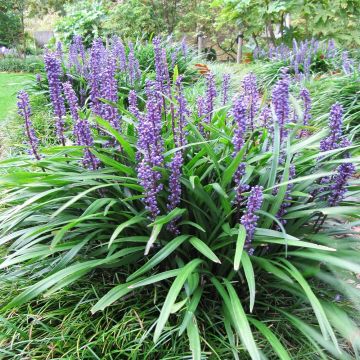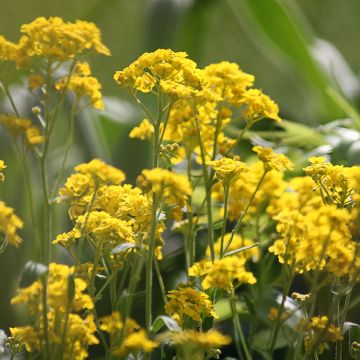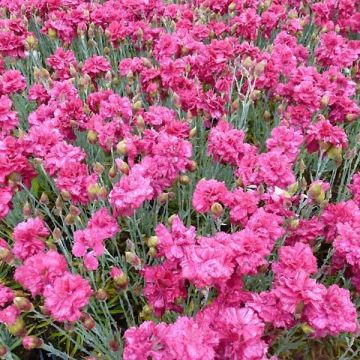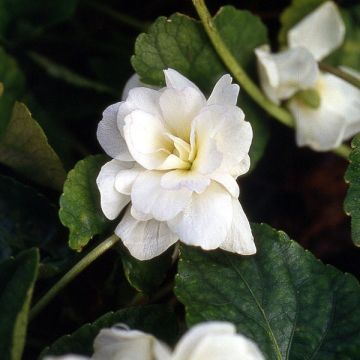

Anemone sylvestris


Anemone sylvestris


Anemone sylvestris


Anemone sylvestris
Anemone sylvestris
Anemone sylvestris
Wood Anemone
This item cannot be shipped to the selected country
Delivery charge from €5.90
Delivery charge from €5.90
More information
Schedule delivery date,
and select date in basket
This plant carries a 12 months recovery warranty
More information
We guarantee the quality of our plants for a full growing cycle, and will replace at our expense any plant that fails to recover under normal climatic and planting conditions.
From €5.90 for pickup delivery and €6.90 for home delivery
Express home delivery from €8.90.
From €5.90 for pickup delivery and €6.90 for home delivery
Express home delivery from €8.90.

Does this plant fit my garden?
Set up your Plantfit profile →
Description
Anemone sylvestris, the wild anemone, should not be confused with the wood anemone (Anemone nemorosa). Unlike its cousin, the sylvestris species dislikes dense shade and appreciates cold and fairly humid climates in summer. A perennial with natural beauty, it naturalises itself on the edge of the undergrowth and in gently sunny areas of the garden, forming dense carpets dotted with slightly fragrant white flowers with yellow stamens in spring. Plant it in semi-shaded areas of the garden, along the edge of a path, or in a cool rockery with spring bulbs, and bleeding hearts.
Anemone sylvestris belongs to the Ranunculaceae family. It is an herbaceous perennial with a rootstock, originating from a vast area ranging from central and eastern Europe to southern Sweden and the Caucasus.
The wild anemone uses its short underground trailing rootstock to develop as ground cover. It is not invasive, as its growth will stop as soon as it reaches areas of the garden that are too sunny, too shaded, or too dry in summer. An adult plant will measure about 40cm (16in) in height when flowering, with a minimum width of 30cm (12in). Winter corresponds to a dormant period for this anemone, whose vegetation emerges from the ground in spring and dies back in autumn-winter. The plant forms a clump of palmate leaves, each carried by a long petiole. Their lamina is deeply divided, slightly velvety, plicate, and coloured from light to dark green. Flowering usually takes place in May-June, sometimes throughout summer if the soil remains moist. Tufts of leaves emerge from thick stems 30 to 40cm (12 to 16in) tall, each carrying a single white flower with a diameter of 3cm (1in), with 5 petals tinted beige on the outside, offering a golden stamen centre. They are full of charm and elegance. These slightly fragrant flowers are popular with pollinating insects. They give way to attractive fruits adorned with silver tufts.
Wild anemones are perfect for filling the base of not too dense bushes or trees, provided that the soil does not dry out too much in summer. They are also lovely border plants, to be placed along semi-shaded paths or in a rockery with slightly moist soil. Plant them with other semi-shade plants such as violets and perennial cyclamen that bloom a little earlier. You can also opt for bleeding hearts, forget-me-nots, fairy flowers, and early bulbs such as hyacinths, tulips, and narcissus, for example. Anemone sylvestris is also a beautiful flower for bouquets.
Report an error about the product description
Anemone sylvestris in pictures




Flowering
Foliage
Plant habit
Botanical data
Anemone
sylvestris
Ranunculaceae
Wood Anemone
Northern Europe
Other Perennials A to Z
Planting and care
Plant your Anemone sylvestris in partial shade. It dreads dense shade as much as scorching exposures. It thrives in humus-bearing and clayey soil without any problem. Ensure the soil doesn't lack water, especially in summer. Limestone is highly appreciated. Excessively acidic and poor soils should be avoided. It belongs to climates with rather cold and rainy summers. It does not appreciate hot and dry regions in summer.
Planting period
Intended location
Care
-
, onOrder confirmed
Reply from on Promesse de fleurs
Spring flowering perennials
Haven't found what you were looking for?
Hardiness is the lowest winter temperature a plant can endure without suffering serious damage or even dying. However, hardiness is affected by location (a sheltered area, such as a patio), protection (winter cover) and soil type (hardiness is improved by well-drained soil).

Photo Sharing Terms & Conditions
In order to encourage gardeners to interact and share their experiences, Promesse de fleurs offers various media enabling content to be uploaded onto its Site - in particular via the ‘Photo sharing’ module.
The User agrees to refrain from:
- Posting any content that is illegal, prejudicial, insulting, racist, inciteful to hatred, revisionist, contrary to public decency, that infringes on privacy or on the privacy rights of third parties, in particular the publicity rights of persons and goods, intellectual property rights, or the right to privacy.
- Submitting content on behalf of a third party;
- Impersonate the identity of a third party and/or publish any personal information about a third party;
In general, the User undertakes to refrain from any unethical behaviour.
All Content (in particular text, comments, files, images, photos, videos, creative works, etc.), which may be subject to property or intellectual property rights, image or other private rights, shall remain the property of the User, subject to the limited rights granted by the terms of the licence granted by Promesse de fleurs as stated below. Users are at liberty to publish or not to publish such Content on the Site, notably via the ‘Photo Sharing’ facility, and accept that this Content shall be made public and freely accessible, notably on the Internet.
Users further acknowledge, undertake to have ,and guarantee that they hold all necessary rights and permissions to publish such material on the Site, in particular with regard to the legislation in force pertaining to any privacy, property, intellectual property, image, or contractual rights, or rights of any other nature. By publishing such Content on the Site, Users acknowledge accepting full liability as publishers of the Content within the meaning of the law, and grant Promesse de fleurs, free of charge, an inclusive, worldwide licence for the said Content for the entire duration of its publication, including all reproduction, representation, up/downloading, displaying, performing, transmission, and storage rights.
Users also grant permission for their name to be linked to the Content and accept that this link may not always be made available.
By engaging in posting material, Users consent to their Content becoming automatically accessible on the Internet, in particular on other sites and/or blogs and/or web pages of the Promesse de fleurs site, including in particular social pages and the Promesse de fleurs catalogue.
Users may secure the removal of entrusted content free of charge by issuing a simple request via our contact form.
The flowering period indicated on our website applies to countries and regions located in USDA zone 8 (France, the United Kingdom, Ireland, the Netherlands, etc.)
It will vary according to where you live:
- In zones 9 to 10 (Italy, Spain, Greece, etc.), flowering will occur about 2 to 4 weeks earlier.
- In zones 6 to 7 (Germany, Poland, Slovenia, and lower mountainous regions), flowering will be delayed by 2 to 3 weeks.
- In zone 5 (Central Europe, Scandinavia), blooming will be delayed by 3 to 5 weeks.
In temperate climates, pruning of spring-flowering shrubs (forsythia, spireas, etc.) should be done just after flowering.
Pruning of summer-flowering shrubs (Indian Lilac, Perovskia, etc.) can be done in winter or spring.
In cold regions as well as with frost-sensitive plants, avoid pruning too early when severe frosts may still occur.
The planting period indicated on our website applies to countries and regions located in USDA zone 8 (France, United Kingdom, Ireland, Netherlands).
It will vary according to where you live:
- In Mediterranean zones (Marseille, Madrid, Milan, etc.), autumn and winter are the best planting periods.
- In continental zones (Strasbourg, Munich, Vienna, etc.), delay planting by 2 to 3 weeks in spring and bring it forward by 2 to 4 weeks in autumn.
- In mountainous regions (the Alps, Pyrenees, Carpathians, etc.), it is best to plant in late spring (May-June) or late summer (August-September).
The harvesting period indicated on our website applies to countries and regions in USDA zone 8 (France, England, Ireland, the Netherlands).
In colder areas (Scandinavia, Poland, Austria...) fruit and vegetable harvests are likely to be delayed by 3-4 weeks.
In warmer areas (Italy, Spain, Greece, etc.), harvesting will probably take place earlier, depending on weather conditions.
The sowing periods indicated on our website apply to countries and regions within USDA Zone 8 (France, UK, Ireland, Netherlands).
In colder areas (Scandinavia, Poland, Austria...), delay any outdoor sowing by 3-4 weeks, or sow under glass.
In warmer climes (Italy, Spain, Greece, etc.), bring outdoor sowing forward by a few weeks.
























































